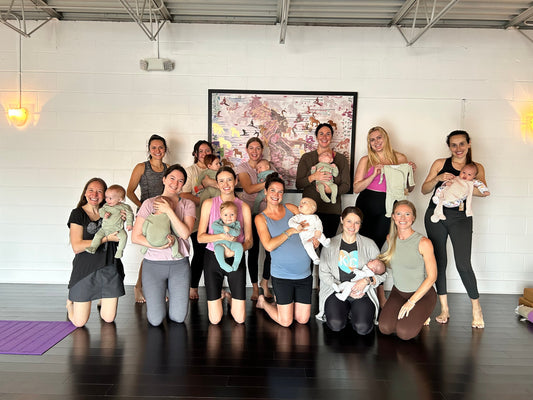Share
Is It Possible to Prevent Preterm Birth?
Pranav JhadavGreater education and research on preterm labor prevention is desperately needed. According to March of Dimes, approximately 15 million babies are born premature each year worldwide, and 1.1 million do not survive. Many premature babies face a lifetime of health complications, ranging from mild to serious. This is a growing health crisis around the world. Preterm labor prevention is possible, though not always within your control. Education, community support, and addressing health inequalities are the first steps in improving birth outcomes.

Baby in NICU wearing Bonsie's Ripple Footie
Here are some suggestions to reduce your risk of premature labor.
Address Health Concerns Prior to Pregnancy
Women who enter pregnancy in good health are less likely to deliver a baby preterm. Women should have quality health care that includes screening, access to contraceptives, health promotion, and interventions that decrease risk. Obesity, diabetes, hypertension, and substance abuse increase risk for preterm delivery and these conditions should be addressed prior to pregnancy. Smoking and substance abuse are particularly dangerous to an unborn baby:
7% of preterm related deaths in the U.S. are attributed to smoking during pregnancy (CDC, 2017).
Identify at Risk Mothers
Proper care and treatment for mothers who are identified as at risk for preterm labor is critical. Women at risk include those who have delivered preterm before, or those with certain health conditions or pregnancy complications. Medication may be offered to help prevent preterm labor as well as increase babies’ chance of survival if they are born preterm. For example, steroid shots develop babies’ lungs quicker, which helps them breathe on their own. In addition, bedrest or other medical advice may be administered to mom to decrease early contractions.
Delivery Goal: After 39 weeks
Babies born before 39 weeks have a greater chance of medical complications. According to the CDC, voluntarily elected inductions should not be offered before 39 weeks unless medically necessary.
Increase Community Engagement
Unintended pregnancies, especially in teens, are 17% more likely to result in preterm birth. Efforts to reduce teen pregnancy through education, community engagement, and contraceptives should be a priority in every community, especially in minority communities where teenage pregnancies and preterm birth rates are the highest. Women older than 35 are also at a higher risk for preterm labor, especially if necessary medical interventions are not in place (CDC, 2017).
Optimal Birth Spacing
Research supports waiting 18-24 months after delivery before getting pregnant again, and not waiting longer than five years between pregnancies for optimal health outcomes. This reduces the chances of pregnancy complications, such as preterm labor and low birth weight. It is particularly high-risk to get pregnant again within six months of having a baby (Mayo Clinic, 2020).
It is important to note that not all preterm labor is preventable.
In some cases, a proactive mom who is taking all the proper steps to keep her and her baby healthy can still deliver a baby preterm for a variety of reasons far beyond her control.
However, you can decrease your chances of preterm labor occurring if you work closely with your doctor, plan ahead, and take good care of yourself before, during, and after pregnancy.
During the month of November, Prematurity Awareness Month, Bonsie Skin to Skin Babywear is donating Bonsies to several NICUs to support parents and encourage skin-to-skin contact. We are also donating a percentage of sales to organizations whose mission is to reduce the number of premature births and improve health for all babies and moms, while providing support to families.
Bonsie's baby-wear is uniquely designed to simplify skin-to-skin contact for parents, which is essential to help preterm babies gain weight, breastfeed, stabilize heart and breathing rates, and regulate temperature and blood sugar. The design is also NICU friendly to allow doctors and nurses to connect sensitive medical equipment without removing clothing.
Together we can help more mothers deliver at full term by promoting greater education, community connection, and improved maternal care.
Sources:
Fighting Premature Birth: The Prematurity Campaign. March of Dimes. (2021.
https://www.marchofdimes.org/mission/prematurity-campaign.aspx
Mayo Foundation for Medical Education and Research. (2020, February 5). Pregnancy Spacing: Tips for family planning. Mayo Clinic. https://www.mayoclinic.org/healthy-lifestyle/getting-pregnant/in-depth/family-planning/art-20044072
Shapiro-Mendoza, C., Barfield, W., Henderson, Z., James, A., Howse, J., Iskander, J., & Thorpe, P. (2017, August 17). CDC Grand Rounds: Public Health Strategies to prevent preterm birth. Centers for Disease Control and Prevention.
https://www.cdc.gov/mmwr/volumes/65/wr/mm6532a4.htm
Share
-
Category:
- All posts


